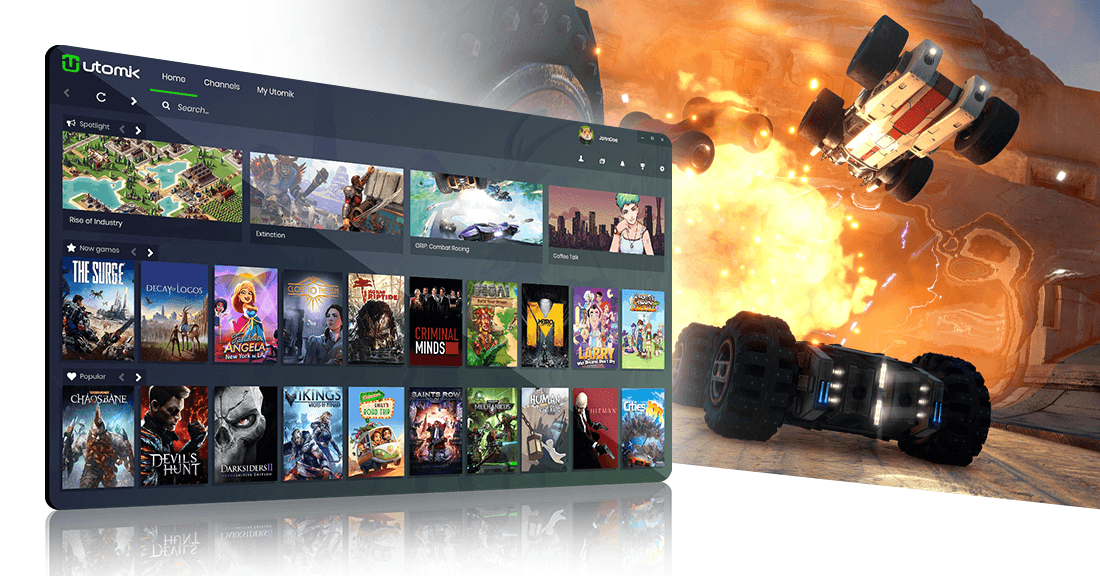
From October 5 to 9, the third edition of the Photonics Applications Week will take place. In this series, Innovation Origins highlights the breakthrough that the application of photonics has meant for three different fields: medical care, the gaming industry and vertical agriculture. Today, Part 2: By transmitting large data packets using light, computer games are becoming more attractive, better and faster.
Doki Tops is the founder and director of Utomik, a platform for games. It works just like Netflix. You can watch movies and series on it. Through Utomik you can choose from more than 600 games to play. We asked Tops whether whether his platform could have existed if he weren’t able to use technology based on photonics. His answer was unequivocal: “No.”
“We don’t make photonics products ourselves, but we need them to run games on our platform,” he explains. “The data the games send to players at home is stored in the cloud.” The cloud is a network of computers, servers and fiber optic cables (if your home is not wired with fiber optics) that are connected to antennas linked to consumers’ computers at home.
Travel via light
The data is transmitted via light, traveling from a server via fiber optics or a 4G or 5G antenna to a home address. This communication via light is based on photonics. “But it’s more than that,” says Tops. “The chips powering the computers also use this technology, since they are manufactured using photonics. In addition, the chips use light to communicate.”
“The processing speed of chips has increased tremendously since their invention in the early 1960’s due to the more efficient and precise use of light. According to Moore’s Law, it has roughly doubled every two years,” says Tops. Gordon Moore was one of the founders of chip manufacturer Intel who also predicted the doubling of the speed of chips.
The kilobyte has already been forgotten
“The consequences for the computing power of computers and data communication are enormous. I remember my father writing an accounting program that he had to pack into 64 kilobytes. Who remembers what a kilobyte is these days? I think most people don’t even know what a byte is. They might know the megabyte, but that’s already changing. Most people now are only familiar with gigabytes,” comments Tops. This shows how quickly the consumer has become accustomed to the possibility of sending and receiving so much data at the same time.
Both the chip and the fiber optic cable were invented in the 1960s. It took a long time, especially for fiber optics, for the product to be developed to the point where it could be used in a wide range of applications. The construction of infrastructure simply takes a long time. When Ziggo lays fiber optic cables in the ground and sets up a 5G network, they invest billions, an investment that they have to recoup. Usually you see competitors in the same market investing in new technology at the same time. “That makes sense,” says Tops. “It takes a lot of cooperation to do that. It’s no good if you have a country with multiple 5G networks.”
Registration for the workshop on applications of photonics for data communication on October 6 from 2:30 to 5:00 pm during the Photonics Application Week can be done here.

